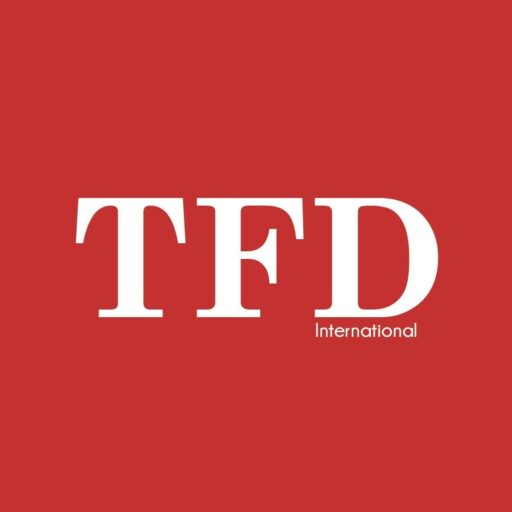KARACHI: On the heels of the Federal Budget announcement for FY2025-26, with an outlay of Rs 17.6 trillion, Pakistan stands at a promising juncture in its economic journey. This budget, slightly more prudent than the previous year’s Rs 18.78 trillion, exemplifies the government’s balanced approach – one that combines fiscal discipline with targeted investments aimed at sustaining growth and enhancing social welfare. The present administration, under the leadership of Prime Minister Shehbaz Sharif, has successfully steered the economy from a period of volatility toward a new era of resilience and reform-driven recovery.
Finance Minister Muhammad Aurangzeb’s 2025 budget presentation spotlighted Pakistan’s strides toward economic stability and growth. With remittances soaring to $31.2 billion and expected to hit $37-38 billion by year-end, economic growth steady at 2.7%, and inflation easing to 4.7%, the outlook is optimistic. Credit ratings have improved, with Fitch upgrading to B- and Moody’s signalling positive momentum. The government is driving bold tax reforms to lift the tax-to-GDP ratio from a low 10%, backed by digital integration for greater efficiency. Crackdowns on fraud have blocked over Rs9 billion in fake refunds and used AI to catch Rs13 billion in fraudulent claims. From July 2025, simplified tax returns for salaried workers will further boost compliance and ease
The recently released Economic Survey 2024-25 vividly captures this remarkable turnaround. After grappling with severe inflation, currency pressures, and dwindling reserves, Pakistan’s economy has rebounded with renewed confidence and stability. This recovery is no mere coincidence; it is the outcome of resolute policy implementation, IMF-supported reforms, and strategic efforts to mobilize resources while safeguarding the welfare of vulnerable citizens.
The Economic Survey 2024-25, launched by Federal Finance Minister Senator Muhammad Aurangzeb, offers a comprehensive picture of Pakistan’s remarkable turnaround – a testament to the government’s determined pursuit of IMF-backed reforms, fiscal prudence, and broad-based economic revival.
The narrative is clear: after a tumultuous period marked by soaring inflation, currency instability, and shrinking reserves, Pakistan’s economy is back on a path of stability and measured growth. This recovery is not accidental but the result of deliberate policy choices focusing on structural reforms, improved governance, and targeted investments in key sectors.
Macroeconomic stability signals a new dawn
The headline figures speak volumes. Real GDP growth of 2.68% in FY2025, while modest, reflects a critical rebound from the contraction of 0.2% in FY2023, signaling resilience in the face of global uncertainties and domestic challenges. Industrial growth led the charge, expanding by an impressive 4.8%, supported by manufacturing recovery and a revival in mining and energy sectors.
Crucially, the economy surpassed the $400 billion GDP milestone for the first time, with per capita income rising to $1,824 – a 9.7% increase over the previous year. These markers underscore a growing economy capable of generating increased wealth and improving living standards.
Inflation’s dramatic fall to a historic low of 0.3% in April 2025- down from an alarming 29.2% just two years earlier – reflects effective monetary policy and improved supply chains. The State Bank’s decision to ease policy rates from 22% to 11% in light of subdued inflation has rekindled investor confidence and consumer purchasing power, evident in a 52% surge in the KSE-100 index.
Fiscal discipline and revenue mobilisation: cornerstones of recovery: Fiscal consolidation remains a cornerstone of the government’s strategy. The fiscal deficit narrowed from 7.4% to 6.5% of GDP, driven by enhanced revenue mobilisation and expenditure management. Revenue collection jumped by 29%, with tax revenues up 38%, showcasing the success of reforms in the Federal Board of Revenue (FBR) and provincial tax administration, especially in agriculture.
Notably, the government posted a historic fiscal surplus of Rs 1,896 billion (1.7% of GDP) in the first quarter of FY2025 – the first surplus in 24 years. This milestone is emblematic of prudent budgeting and the disciplined execution of the National Fiscal Pact and GST rationalization measures, which have broadened the tax base while supporting business activity.
With public debt stabilizing at 74.1% of GDP (down from 76.4%), and domestic debt constituting 61% of the total, Pakistan is steadily managing its liabilities in a sustainable manner. The government’s emphasis on domestic resource mobilisation and capital market development is reflected in a 50% surge in stock market capitalisation and a 38% increase in corporate bond issuance, fostering a vibrant investment environment.
External sector resilience amid global headwinds: Pakistan’s external sector has shown encouraging signs of strength. Foreign exchange reserves reached $16.64 billion, comfortably covering over three months of imports. The current account recorded a $1.2 billion surplus, a rare but welcome achievement that highlights improved export performance and robust remittance inflows, which rose 11% to $32 billion.
The Roshan Digital Account program, facilitating overseas Pakistanis’ investment flows, saw record inflows, affirming renewed diaspora confidence in Pakistan’s economic prospects. Total foreign direct investment (FDI) increased by 16.5%, reflecting global investor faith in the country’s reform trajectory and macroeconomic stability.
On the global stage, Pakistan benefits from stable growth projections in key partner countries such as Saudi Arabia, UAE, China, and the United States, and from an easing of global inflationary pressures. These external tailwinds provide additional support to Pakistan’s export competitiveness and external sustainability.
Social sector and human capital development – Foundations for inclusive growth: The government’s commitment to social welfare and human development remains unwavering. The Benazir Income Support Programme (BISP) continued its expansion, disbursing Rs 598.72 billion in FY2025 to nearly 10 million beneficiaries, ensuring targeted support for vulnerable segments and strengthening the social safety net.
Education and health sectors have witnessed steady progress, with literacy rates climbing to 62.8% and infant mortality rates declining modestly. Rs 61.12 billion was allocated to the Higher Education Commission, and youth empowerment programs trained over 56,000 young Pakistanis in market-relevant skills, particularly in IT and hospitality – sectors aligned with the country’s digital transformation agenda.
Digital transformation and energy diversification: Engines of future growth
Digital innovation is rapidly transforming Pakistan’s economic landscape. ICT exports surged by 23.7% to $2.8 billion, driven by thriving software development, freelancing, and e-commerce sectors. Over 50 Software Technology Parks and e-Rozgar centers, alongside National Incubation Centers supporting nearly 2,000 startups, have collectively created over 185,000 jobs and attracted Rs 30.8 billion in investments.
Meanwhile, installed electricity generation capacity rose to 46,605 MW, reflecting the government’s focus on energy diversification and infrastructure expansion. Though challenges remain, including the burden of capacity payments on idle power plants, ongoing reforms promise improved efficiency and sustainability in the power sector.
Agricultural sector: Resilience amid challenges: The agricultural sector grew modestly by 0.56%, supported primarily by livestock performance which grew 4.72%, underscoring the sector’s critical role in rural livelihoods and food security. Although key crop production declined due to adverse weather and reduced cultivation areas, growth in other crops like potatoes and onions partly offset losses.
The government recognizes the sector’s challenges and is prioritizing policies to boost productivity, enhance irrigation infrastructure, and support agri-business innovation – crucial steps to ensure food security and rural prosperity.
Policy priorities: The Federal Budget 2025-26 of Rs 17.6 trillion, will continue this trajectory of fiscal discipline combined with growth-friendly reforms. While slightly lower than last year’s Rs 18.78 trillion, the budget aims to balance fiscal prudence with strategic investments in health, education, social protection, and infrastructure.
The government’s cautious approach to growth – targeting a sustainable 2.7% GDP expansion rather than overstretched, volatile booms – signals a matured economic mindset that prioritizes stability and long-term development over short-term populism.
Investments in digital infrastructure, green finance via the landmark Green Sukuk, and climate resilience initiatives like Recharge Pakistan highlight the government’s commitment to sustainable and inclusive economic development.
Pakistan’s economic story today is one of resilient recovery, anchored in a robust reform agenda, prudent fiscal management, and strategic sectoral investments. Under Finance Minister Muhammad Aurangzeb’s stewardship, the government has navigated formidable challenges – from surging inflation to fiscal deficits – to lay the groundwork for steady, inclusive growth.
The upcoming budget will reinforce this progress, sustaining Pakistan’s path towards macroeconomic stability, fiscal health, and social uplift. With strong governance, transparent policies, and continued engagement with global partners and investors, Pakistan is well-positioned to transform its economic prospects and deliver prosperity for all its citizens.
Sign in
Welcome! Log into your account
Forgot your password? Get help
Password recovery
Recover your password
A password will be e-mailed to you.





